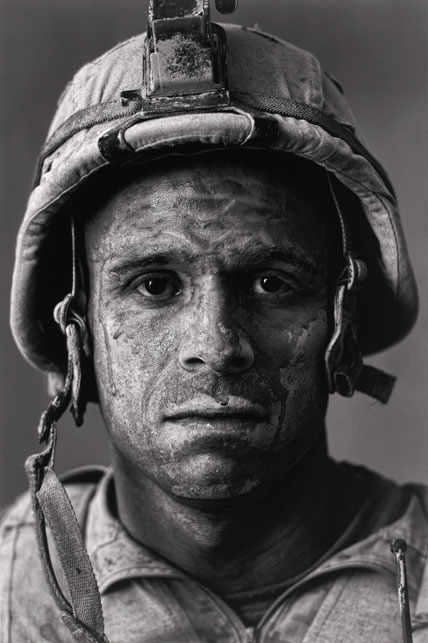
Louie Palu (Canadian, b. 1968). U.S. Marine Gysgt. Carlos “OJ” Orjuela, age 31, Garmsir District, Helmand Province, Afghanistan, from Project: Home Front, 2008. Inkjet print, artist’s proof, 211⁄2 x 141⁄4 in. (54.6 × 36.2 cm). The Museum of Fine Arts, Houston, gift of Joan Morgenstern. © Photographer Louie Palu

Louie Palu (Canadian, b. 1968). U.S. Marine Gysgt. Carlos “OJ” Orjuela, age 31, Garmsir District, Helmand Province, Afghanistan, from Project: Home Front, 2008. Inkjet print, artist’s proof, 211⁄2 x 141⁄4 in. (54.6 × 36.2 cm). The Museum of Fine Arts, Houston, gift of Joan Morgenstern. © Photographer Louie Palu
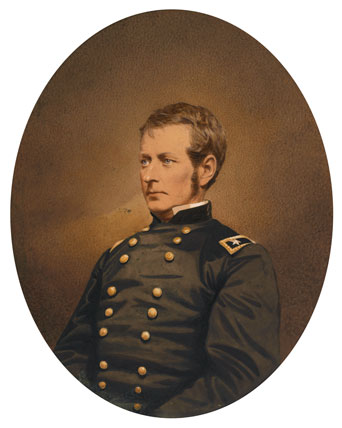
Mathew B. Brady (American, 1823–1896). Major-General Joseph Hooker, circa 1863. Salted paper print, hand colored, 1515⁄16 x 131⁄8 in. (40.5 × 33.3 cm). The Museum of Fine Arts, Houston, museum purchase with funds provided by the S. I. Morris Photography Endowment
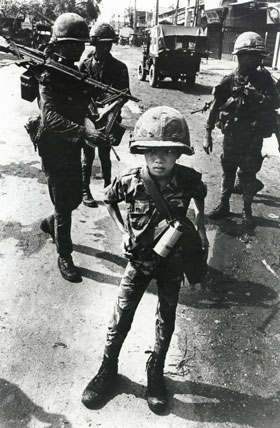
Philip Jones Griffiths (Welsh, 1936–2008). Called “Little Tiger” for killing two “Vietcong women cadre”—his mother and teacher, it was rumored, Vietnam, 1968. Gelatin silver print, 11 × 715⁄16 in. (27.9 × 20.2 cm). Philip Jones Griffiths Foundation, courtesy of Howard Greenberg Gallery. © Philip Jones Griffiths / Magnum Photos

Walter Astrada (Argentine, b. 1974). Congolese women fleeing to Goma, from the series Violence Against Women in Congo, Rape as Weapon of War in DRC, 2008. Chromogenic print (printed 2010), 1613⁄16 x 241⁄4 in. (42.7 × 61.6 cm). The Museum of Fine Arts, Houston, museum purchase with funds provided by Photo Forum 2010. © Walter Astrada
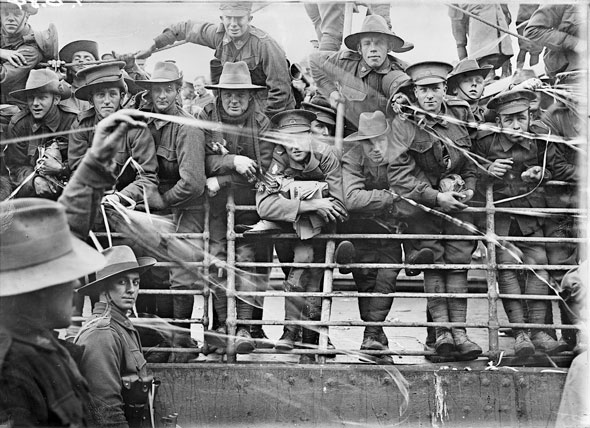
Josiah Barnes (Australian, 1858–1921). Embarkation of HMAT Ajana, Melbourne, 1916. Gelatin silver print from original glass half-plate negative (printed 2012), 151⁄2 x 197⁄8 in. (39.4 × 50.5 cm). On loan from the Australian War Memorial, Canberra (AWM PB0084)
Josiah Barnes captures a cinematic scene of soldiers departing from Australia to fight in World War I. Barnes made his living photographing departing troopships and selling the pictures to family members and newspapers. He positioned himself close enough to ensure that the men’s faces would be clearly and easily identified. He also displayed these images in the window of his shop and circulated them as postcards and prints.
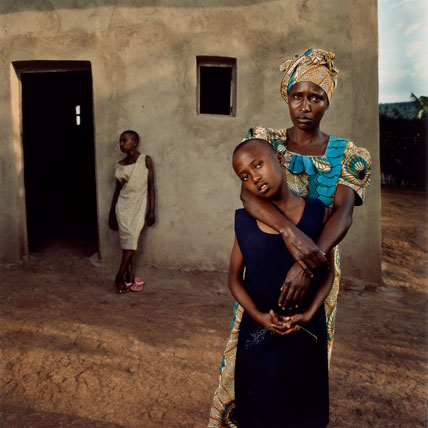
Jonathan C. Torgovnik (American, b. 1969). Valentine with her daughters Amelie and Inez, Rwanda, from the series Intended Consequences, 2006. Chromogenic print, ed. 11/25, 24 × 20 in. (61 × 50.8 cm). The Museum of Fine Arts, Houston, gift of the artist. © Jonathan Torgovnik
Jonathan Torgovnik documented the aftereffects of systematic rape in Rwanda during the 1994 genocide, when hundreds of thousands of Tutsi women were raped by members of Hutu militia groups. Approximately twenty thousand children were born from these atrocities; women who would not forsake these children were shunned and stigmatized by their families and tribal communities.
Torgovnik’s book, Intended Consequences: Rwandan Children Born of Rape features these women and their children and their firsthand testimonies. This portrait shows Valentine and her two daughters, one fathered by her husband, a Tutsi who was murdered while she was forced to watch, and another born from rape.
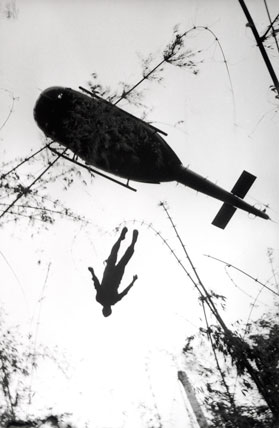
Henri Huet (French, 1927–1971). The body of an American paratrooper killed in action in the jungle near the Cambodian border is raised up to an evacuation helicopter, Vietnam, 1966. Gelatin silver print (printed 2004), 14 × 107⁄8 in. (35.6 × 27.7 cm). The Museum of Fine Arts, Houston, museum purchase. © Associated Press
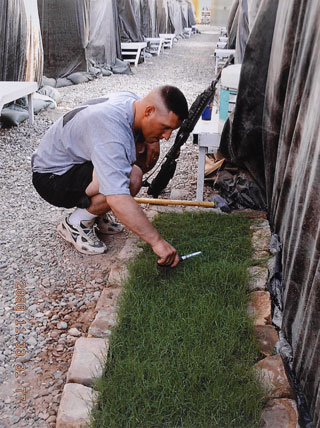
Mark A. Grimshaw (American, b. 1968). First Cut, Iraq, July 2004. Inkjet print (printed 2012), 1715⁄16 x 147⁄16 in. (45.6 × 36.7 cm). Courtesy of the artist. © Mark Grimshaw
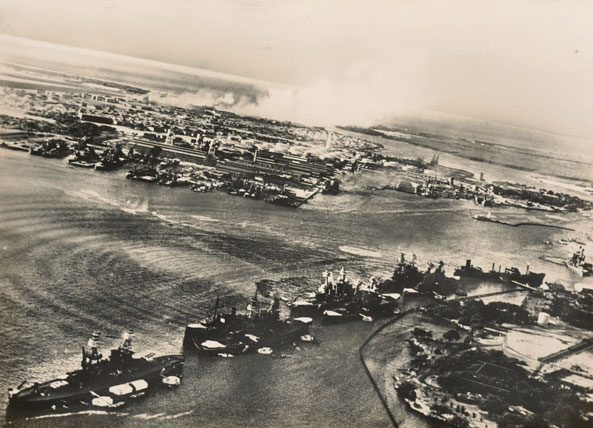
Unknown Japanese photographer. War in Hawaiian Water: Japanese Torpedoes Attack Battleship Row, Pearl Harbor, 1941. Gelatin silver print, 511⁄16 x 713⁄16 in. (14.5 × 19.8 cm). The Museum of Fine Arts, Houston, gift of Will Michels
This photograph of the surprise attack by the Imperial Japanese Navy on the US naval, air force, and army bases at Pearl Harbor on December 7, 1941, was taken by a Japanese airman. The picture shows torpedoes heading toward Battleship Row with Hickam Field burning in the background. The image captures, in effect, the moment when the United States entered World War II.
The picture was widely distributed as a press photograph by both the Japanese and German governments during the war to celebrate Japanese military power. However, it was not published in the United States until after the war.

Thomas Hoepker (German, b.1936). A US Marine drill sergeant delivers a severe reprimand to a recruit, Parris Island, South Carolina, from the series US Marine Corps Boot Camp, 1970. Inkjet print (printed 2012), 1413⁄16 x 22 in. (37.6 × 55.9 cm). © Thomas Hoepker / Magnum Photos
Conditioned by books and movies, such as Stanley Kubrick’s Full Metal Jacket, as well as by stories from soldiers about their experiences, the public expects to see severe reprimands in portrayals of training in traditional armies. In this photograph, Thomas Hoepker found exactly that moment to include in his photo-essay US Marine Corps Boot Camp (1970), about training on Parris Island, South Carolina, one of the two recruit depots used by the Marines.
WAR/PHOTOGRAPHY: Images of Armed Conflict and Its Aftermath
November 8, 2013–February 2, 2014
WAR/PHOTOGRAPHY: Images of Armed Conflict and Its Aftermath explores the experience of war with an unprecedented collection of 400 photographic prints, books, magazines, albums, and camera equipment, bringing together iconic and unknown images taken by members of the military, commercial portraitists, journalists, amateurs, artists, and numerous Pulitzer Prize–winning photographers.
Including the work of some 255 photographers from around the globe who have covered conflicts over the last 166 years, WAR/PHOTOGRAPHY examines the interrelationship between war and photography, reveals the evolution of the medium by which war is recorded and remembered, and explores the range of experience of armed conflict: recruitment, training, embarkation, daily routine, battle, death and destruction, homecoming, and remembrance. In addition to depicting the phases of war, WAR/PHOTOGRAPHY includes portraits of servicemen, military and political leaders, and civilians and refugees.
The objects on view include rare daguerreotypes and vintage photographs, such as Roger Fenton’s iconic The Valley of the Shadow of Death (1855) from the Crimean War and an early print of Joe Rosenthal’s Old Glory Goes Up on Mount Suribachi, Iwo Jima. More recent images include a 2008 photograph of the Battle Company of the 173rd Airborne Brigade in eastern Afghanistan by Tim Hetherington.
WAR/PHOTOGRAPHY: Images of Armed Conflict and Its Aftermath has been organized by the Museum of Fine Arts, Houston, curatorial team of Anne Wilkes Tucker, Will Michels, and Natalie Zelt. The Brooklyn presentation is organized by Tricia Laughlin Bloom, Associate Curator of Exhibitions, Brooklyn Museum.
Generous support for the exhibition in Brooklyn has been provided by the Robert Mapplethorpe Foundation and the Martha A. and Robert S. Rubin Exhibition Fund.
